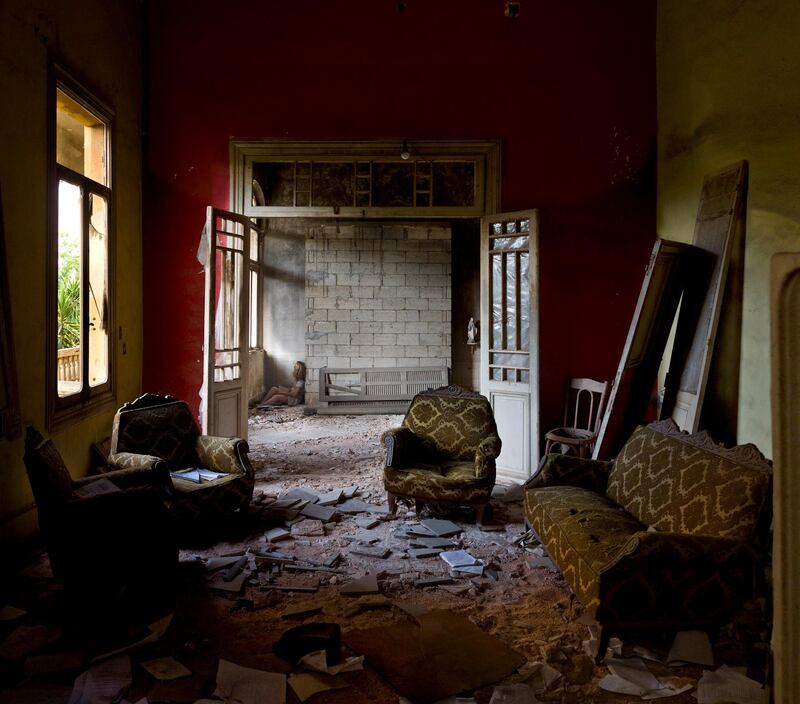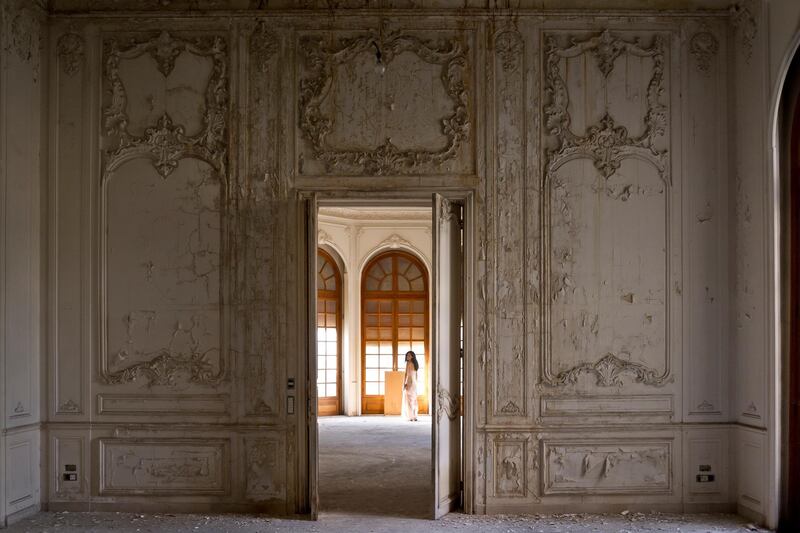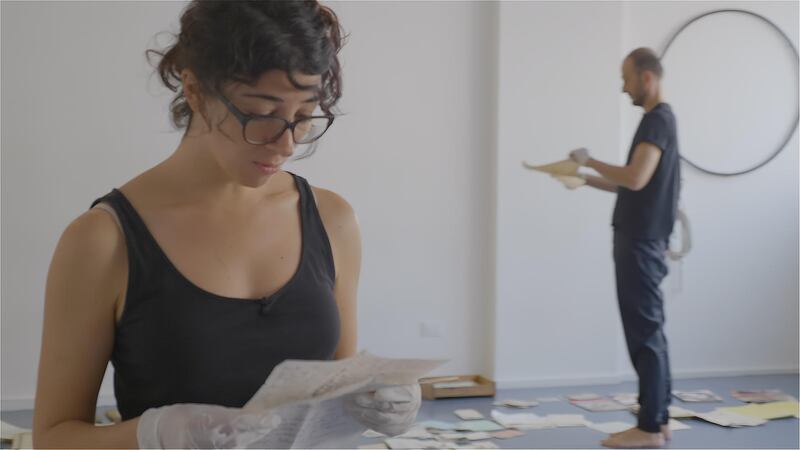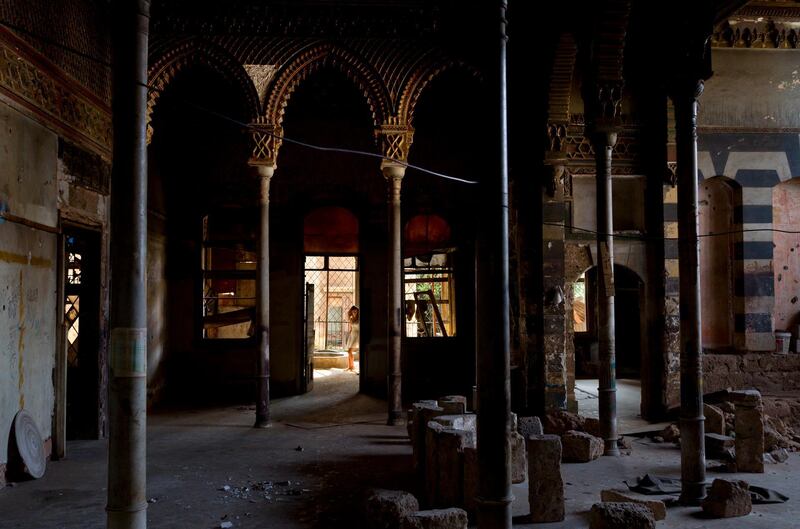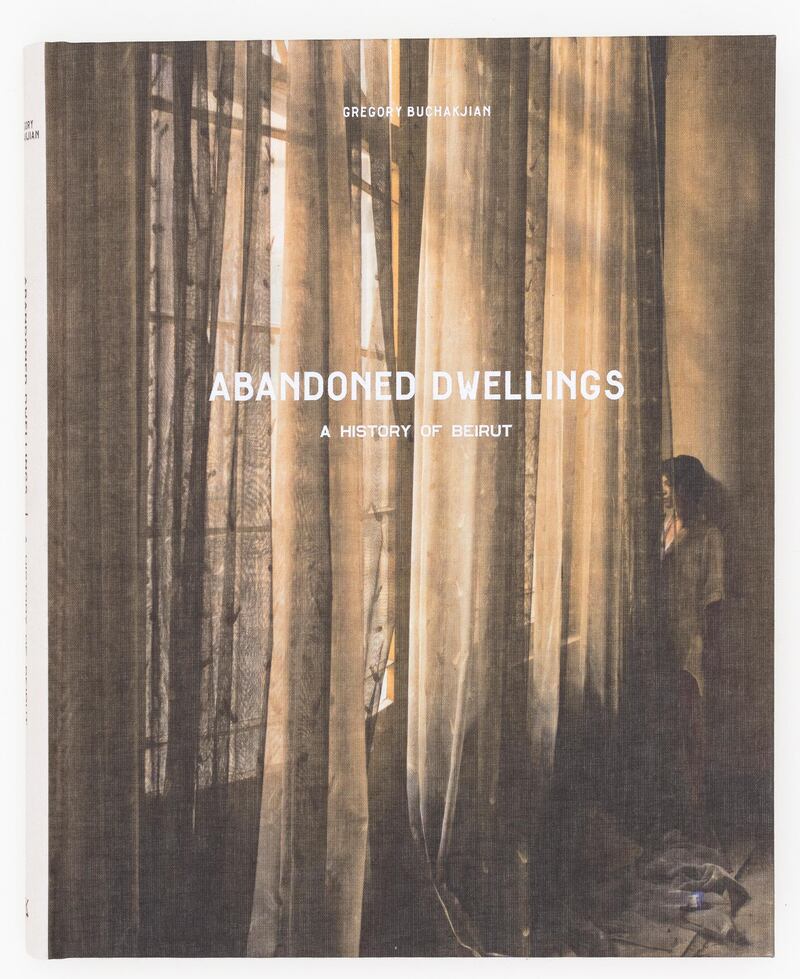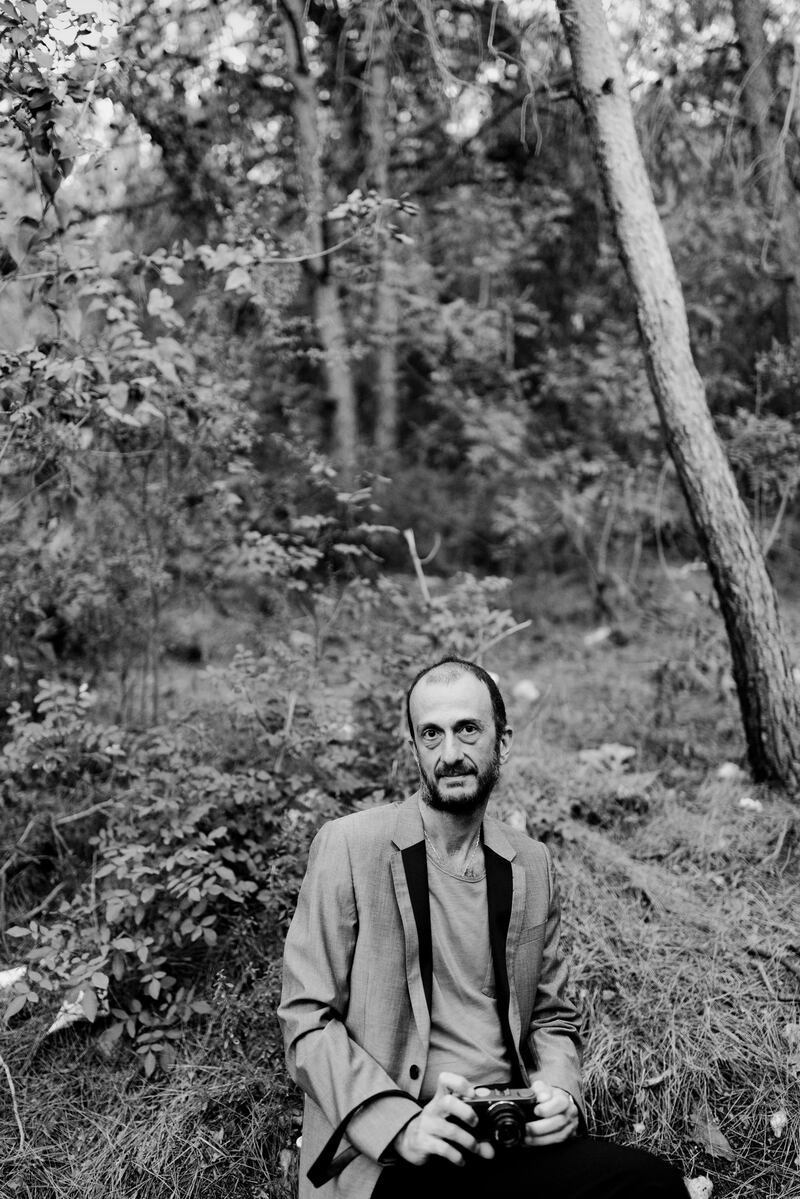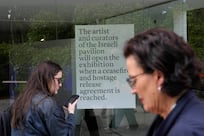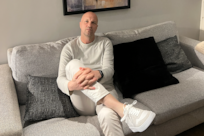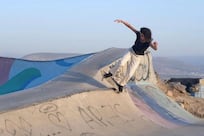“I may be the only person on earth who decided to do a PhD not because I wanted to, but because there were only two ways out: one was a PhD, the other was to end up in a psychiatric hospital,” says Gregory Buchakjian.
Seated in his cosy living room, surrounded by framed photographs, some taken by prominent Lebanese artists, others by Buchakjian himself, the art historian and academic insists that he isn’t joking.
In 2009, he became fascinated with abandoned residential buildings around Beirut and began sneaking in to photograph their crumbling interiors and dusty, water-damaged contents. By 2012, his hobby had become a compulsion. “The project is really like Russian dolls – it’s boxes within boxes,” he explains. “It starts with photographs. The photographs generate an obsession with entering all these buildings, so the second step is trying to find all the possible buildings in Beirut and map them. Then the third stage is when Valerie Cachard intervenes in the story and we start taking things.”
Together with his friend Cachard, Buchakjian began to collect objects from the abandoned homes he visited. Like an archaeologist, he sifted through the traces of the past, unearthing forgotten letters and pictures, souvenirs and ornaments, newspapers and even passports. “The most interesting is an agenda in that was written as an instruction manual on how to use weapons and conduct warfare,” he recalls. “This is a document that was produced by the Palestinian Liberation Organisation in the 1970s. It’s handwritten and there are the nicknames of the people who did it.”
In 2012, Buchakjian applied to the Sorbonne in Paris to do a PhD focused on the history of Beirut’s abandoned residential buildings and the transformative uses to which they have been put – from militia strongholds and detention centres during the Lebanese Civil War to shelters for refugees and temporary event venues in its aftermath. “The PhD was a way of framing it, giving it an end, because it’s endless. You can keep doing this all your life,” he explains.
Two years ago, Buchakjian completed his PhD. The 800-page document was accompanied by more than 700 sheets documenting the location, plot number, square meterage, architectural features and state of conservation of the abandoned buildings he explored during his seven years of research. Since then, he has been working on two parallel projects: a book containing a simplified, condensed version of his thesis and a solo exhibition.
Abandoned Dwellings: A History of Beirut, published by Kaph Books, is a fascinating overview of the city's recent past, as explained through its buildings – from the skyscrapers fought over in the infamous Battle of the Hotels, to the private homes used as barracks and prisons – and the varied ways these spaces were used after the conflict's end.
Buchakjian's solo show, Abandoned Dwellings: Display of Systems, curated by Karina el-Helou, is more personal. The exhibition, which opened last Thursday at Beirut's Sursock Museum, includes four separate strands of Buchakjian's work, spanning his artistic and academic production.
The biggest challenge was how to display the hundreds of documents and objects collected over the years. In the end, Buchakjian and Cachard decided to do a performance. A film shot by Malek Hosni captures the duo handling the archive, reading aloud snippets of letters, newspaper articles and documents in English, French and Arabic.
The film breathes new life into these abandoned possessions. Taken from their context, they become artefacts – it’s easy to forget that most are less than 50 years old.
“We needed to preserve the privacy of people,” says Buchakjian. “Many of these people are alive, so we ensured that when we read a fragment of a letter only they can identify themselves.”
Accompanying the film are 20 small screens that reveal Buchakjian’s obsessive approach to documenting the sites he visited. Each displays a slide show of 100 photographs detailing the interior architecture of the abandoned dwellings, including bathrooms, corridors, staircases, mashrabiya windows, stained glass, mouldings and wallpaper. The 2,000 images included in the exhibition comprise less than a fifth of the photos in Buchakjian’s archive, which also covers exterior architecture, conditions and conservation, intervention and transformation, documents and furnishings and organisms.
Across the hallway, in the second of the museum’s Twin Galleries, is an interactive installation showcasing Buchakjian’s database of more than 700 abandoned buildings, displayed on a custom-made stand created by local designers Marc Dibeh and Marc Baroud. Visitors can hunt through his papers, which are organised geographically, by quarter and sector.
Surrounding this research display are eight photographs shot by Buchakjian in abandoned buildings as part of an artistic series in which he asked women to make themselves at home amid the wreckage, the rubbish and the rubble.
These striking photographs are the most controversial aspect of his work, he admits, departing from his academic approach. He was inspired in part by Hamasat, a film shot in 1980 by Maroun Bagdadi, in which poet Nadia Tueni walks through the ruins of Downtown Beirut, reciting a poem. Although he tried photographing both men and women inside abandoned homes, he found that while the women helped to create a sense of intimacy, the men created a sense of distance. "When you put men in ruins, the men will look like warriors or workers," he says. "I needed to have the feeling that the people are not in a ruin but rather at home."
Each photograph is accompanied by a framed narrative that describes Buchakjian’s experiences, from encounters with police and squatters, to self-appointed caretakers “who behaved as though some authority had invested them with a sacred mission.”
One particularly beautiful photo was taken in an old mansion known as Qasr Heneine, in Zoukak el-Blatt. Having served as the consulates of the United States and the Netherlands, a private residence, a restaurant and a shelter for refugees during the civil war, the mansion became a dormitory for construction workers building a skyscraper on the plot next door.
__________________
Read more:
Lebanon celebrates 2,000 years of creativity with new Nabu Museum
Tom Young's Grand Sofar Hotel exhibition harks back to Lebanon's golden age
50 years’ change in Lebanon caught in landmark images
__________________
By 2015, when Buchakjian’s photo was taken, it was empty. He captures the grand entrance hall, its ornamental windows smashed, its paint peeling, its double staircases crumbling, their once beautiful iron balustrades sagging and rusty. Running in an opposing diagonal, patterned sunlight falls across the walls from a high window, partially covered with broken shutters. At the base of this golden light, a woman sits in repose. It’s a spectacular image, reminiscent of a classical painting.
In these photographs, Buchakjian sees not with the eye of a researcher, but with that of an artist. His work highlights the ephemeral beauty of spaces that are slowly crumbling away. “What made me start the project is the fact that they were being torn down and I couldn’t do anything, so it was my way of preserving something,” he says.
“I must say that finishing the project gave me a detachment. Now, on a personal level, I like them like they are, not to be restored, because for me these places are time machines, and they are time machines in this precarious condition. This is what makes them interesting. When you restore a ruin, you are destroying the ruin.”
The exhibition Abandoned Dwellings: Display of Systems is on show at Sursock Museum in Beirut until February 2019. The book Abadoned Dwellings: A History of Beirut is available at Virgin Megastore in the UAE
